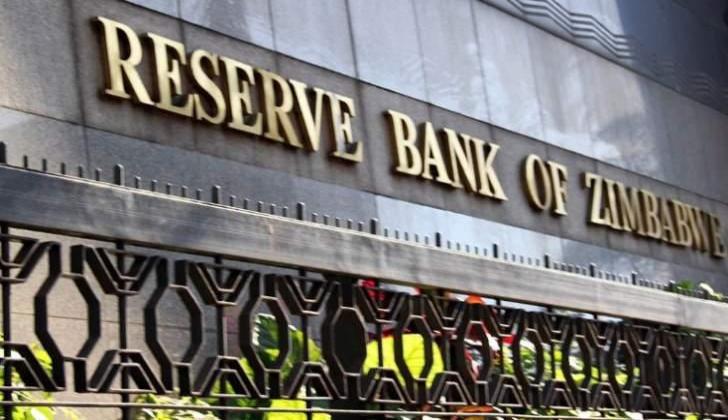Business / Economy
Zimbabwe banks show strong capital buffers
3 hrs ago | Views

Most Zimbabwean banking institutions have exceeded minimum regulatory capital requirements, signalling stability, resilience, and soundness in the country's financial system, the latest Reserve Bank of Zimbabwe (RBZ) data shows.
According to the 2025 Mid-Term Monetary Policy Review Statement presented by RBZ Governor Dr John Mushayavanhu on Thursday, 17 of the 19 operational banks reported core capital levels above the prescribed thresholds, underscoring the sector's solid capital position.
CBZ Bank led the market with a core capital of ZiG5,74 billion (US$213 million), more than seven times the US$30 million minimum for commercial banks. Stanbic Bank followed with US$154,6 million, Ecobank Zimbabwe with US$124,9 million, and CABS with US$118,7 million.
Under RBZ regulations, commercial banks must hold a minimum of US$30 million in core capital, while building societies and other deposit-taking institutions must maintain at least US$20 million. Thirteen institutions comfortably exceeded the commercial banking threshold.
A few, including ZB Building Society (US$5,1 million), FBC Building Society (US$25,5 million), and National Building Society (US$40,2 million), operated close to or slightly below the requirement. Time Bank, which reported US$3,8 million, remains restricted to non-deposit-taking operations, while ZB Building Society is in the process of surrendering its licence.
Economist Donald Rudza said the figures reflect strong depositor and investor confidence.
"Zimbabwe's banking sector has shown remarkable resilience. Strong capital positions like those of CBZ and Stanbic provide reassurance that our financial system remains sound even under challenging macroeconomic conditions," Rudza said.
The RBZ noted that strong capitalisation has enabled banks to expand lending. Loans and advances grew to ZiG67,5 billion as at June 30, 2025, from ZiG55,9 billion in December 2024, with 72 percent channelled to productive sectors. Agriculture received 16,8 percent of loans, manufacturing 12,2 percent, and distribution 10,9 percent.
Credit quality improved, with the non-performing loan (NPL) ratio falling to 2,9 percent from 3,4 percent in December 2024 — well within the international benchmark of 5 percent.
Deposits rose to ZiG112,8 billion from ZiG89,1 billion over the same period, with foreign currency deposits making up 84,7 percent of the total. Liquidity also remained strong, with the sector's average prudential liquidity ratio at 56,8 percent, far above the 30 percent minimum.
Although sector profit fell to ZiG5 billion (US$184,07 million) for the half-year to June 30, 2025, compared to ZiG10,4 billion (US$760,37 million) in the same period last year, analysts attribute the decline to tighter monetary conditions under recent reforms, including the introduction of the Zimbabwe Gold (ZiG) currency.
Analysts expect further strengthening as banks reinvest earnings and adjust to evolving economic conditions.
"The available data paints a picture of a resilient and well-capitalised banking sector that is actively supporting Zimbabwe's economic recovery," Rudza said.
According to the 2025 Mid-Term Monetary Policy Review Statement presented by RBZ Governor Dr John Mushayavanhu on Thursday, 17 of the 19 operational banks reported core capital levels above the prescribed thresholds, underscoring the sector's solid capital position.
CBZ Bank led the market with a core capital of ZiG5,74 billion (US$213 million), more than seven times the US$30 million minimum for commercial banks. Stanbic Bank followed with US$154,6 million, Ecobank Zimbabwe with US$124,9 million, and CABS with US$118,7 million.
Under RBZ regulations, commercial banks must hold a minimum of US$30 million in core capital, while building societies and other deposit-taking institutions must maintain at least US$20 million. Thirteen institutions comfortably exceeded the commercial banking threshold.
A few, including ZB Building Society (US$5,1 million), FBC Building Society (US$25,5 million), and National Building Society (US$40,2 million), operated close to or slightly below the requirement. Time Bank, which reported US$3,8 million, remains restricted to non-deposit-taking operations, while ZB Building Society is in the process of surrendering its licence.
Economist Donald Rudza said the figures reflect strong depositor and investor confidence.
The RBZ noted that strong capitalisation has enabled banks to expand lending. Loans and advances grew to ZiG67,5 billion as at June 30, 2025, from ZiG55,9 billion in December 2024, with 72 percent channelled to productive sectors. Agriculture received 16,8 percent of loans, manufacturing 12,2 percent, and distribution 10,9 percent.
Credit quality improved, with the non-performing loan (NPL) ratio falling to 2,9 percent from 3,4 percent in December 2024 — well within the international benchmark of 5 percent.
Deposits rose to ZiG112,8 billion from ZiG89,1 billion over the same period, with foreign currency deposits making up 84,7 percent of the total. Liquidity also remained strong, with the sector's average prudential liquidity ratio at 56,8 percent, far above the 30 percent minimum.
Although sector profit fell to ZiG5 billion (US$184,07 million) for the half-year to June 30, 2025, compared to ZiG10,4 billion (US$760,37 million) in the same period last year, analysts attribute the decline to tighter monetary conditions under recent reforms, including the introduction of the Zimbabwe Gold (ZiG) currency.
Analysts expect further strengthening as banks reinvest earnings and adjust to evolving economic conditions.
"The available data paints a picture of a resilient and well-capitalised banking sector that is actively supporting Zimbabwe's economic recovery," Rudza said.
Source - The Herald


































